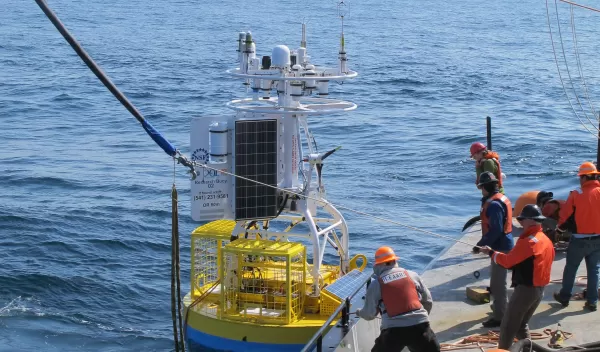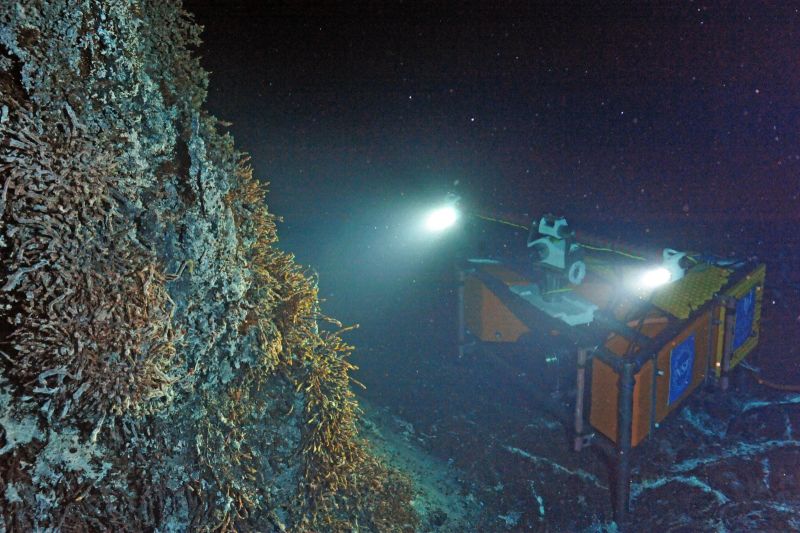
Enabling key oceanographic science for the 21st century: NSF announces renewal of the Ocean Observatories Initiative facility award
The U.S. National Science Foundation has announced a $220 million award to a coalition of research organizations, led by the Woods Hole Oceanographic Institution (WHOI), to continue operations and maintenance of the Ocean Observatories Initiative (OOI).
OOI is an integrated suite of instrumented platforms and discrete instruments, like robotic gliders, that measure ocean processes from the sea floor to the sea surface. OOI is comprised of five arrays — two Global Arrays, one Regional Cabled Array and two Coastal Arrays — united by a common cyberinfrastructure and cutting-edge technologies.
"We can think of OOI as directly monitoring critical organs of the Earth," said Division of Ocean Sciences Head Lisa Clough. "We need to answer questions about changing ocean temperatures and circulation at all depths to determine if the ocean will maintain stable 'blood chemistry' despite fossil fuel use. In short, we need continuous measurements in critical places."
OOI contributes data beyond climate research. Off the Oregon coast, instrumentation monitors the sea floor movements to inform hazard forecasting. The infrastructure fosters innovations in marine technology through partnerships with private industry and other federal agencies. OOI is also committed to open science; the data it collects has been nearly real-time, freely available and accessible since its inception.
"OOI data serve as inspiration for students in the classroom, who are excited about learning about the ocean with access to real-time ocean data," said OOI program director George Voulgaris. "We at NSF are proud of our continued investment in making these data available."
As with the previous award, WHOI will serve as lead along with the University of Washington and Oregon State University. In addition to adding staff and increasing cybersecurity capabilities, the new award will support movement of the Pioneer Array to a new location. The Pioneer Array was previously off the New England coast, 55 miles south of Martha's Vineyard.
More information about OOI and access to data can be found on the OOI website.

